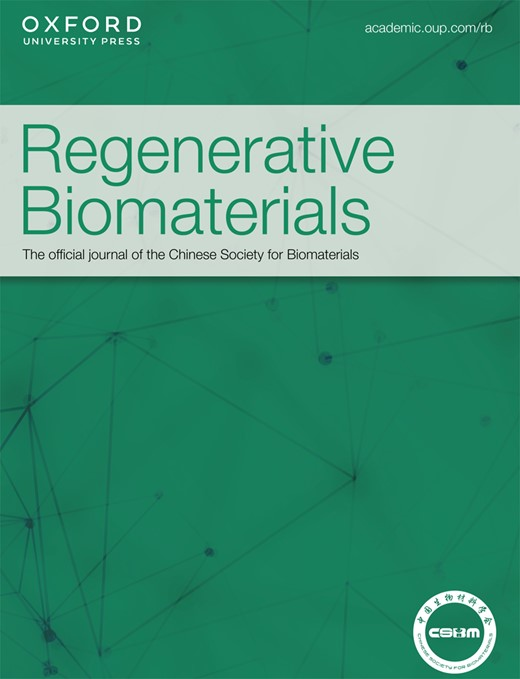Periapical lesion-derived decellularized extracellular matrix as a potential solution for regenerative endodontics
IF 5.6
1区 医学
Q1 MATERIALS SCIENCE, BIOMATERIALS
引用次数: 0
Abstract
Pulp regeneration remains a crucial target in the preservation of natural dentition. Using decellularized extracellular matrix is an appropriate approach to mimic natural microenvironment and facilitate tissue regeneration. In this study, we attempted to obtain decellularized extracellular matrix from periapical lesions (PL-dECM) and evaluate its bioactive effects. The decellularization process yielded translucent and viscous PL-dECM, meeting the standard requirements for decellularization efficiency. Proteomic sequencing revealed that the PL-dECM retained essential extracellular matrix components and numerous bioactive factors. The PL-dECM conditioned medium could enhance the proliferation and migration ability of periapical lesion-derived stem cells (PLDSCs) in a dose-dependent manner. Culturing PLDSCs on PL-dECM slices improved odontogenic/angiogenic ability compared to the type I collagen group. In vivo, the PL-dECM demonstrated a sustained supportive effect on PLDSCs and promoted odontogenic/angiogenic differentiation. Both in vitro and in vivo studies demonstrated that PL-dECM served as an effective scaffold for pulp tissue engineering, providing valuable insights into PLDSCs differentiation. These findings pave avenues for the clinical application of dECM's in situ transplantation for regenerative endodontics.将根尖周病变衍生的脱细胞细胞外基质作为牙髓再生疗法的潜在解决方案
牙髓再生仍然是保存天然牙体的关键目标。使用脱细胞细胞外基质是模拟自然微环境和促进组织再生的合适方法。在这项研究中,我们尝试从根尖周病变中获取脱细胞细胞外基质(PL-dECM),并评估其生物活性效果。脱细胞过程产生了半透明且粘稠的PL-dECM,符合脱细胞效率的标准要求。蛋白质组测序显示,PL-dECM 保留了细胞外基质的基本成分和多种生物活性因子。PL-dECM条件培养基能以剂量依赖的方式增强根尖周病变衍生干细胞(PLDSCs)的增殖和迁移能力。与I型胶原组相比,在PL-dECM切片上培养PLDSCs可提高牙体生成/血管生成能力。在体内,PL-dECM 对 PLDSCs 有持续的支持作用,并能促进牙体生成/血管生成分化。体外和体内研究都表明,PL-dECM 是牙髓组织工程的有效支架,为 PLDSCs 的分化提供了宝贵的见解。这些发现为 dECM 在牙髓再生领域的原位移植临床应用铺平了道路。
本文章由计算机程序翻译,如有差异,请以英文原文为准。
求助全文
约1分钟内获得全文
求助全文
来源期刊

Regenerative Biomaterials
Materials Science-Biomaterials
CiteScore
7.90
自引率
16.40%
发文量
92
审稿时长
10 weeks
期刊介绍:
Regenerative Biomaterials is an international, interdisciplinary, peer-reviewed journal publishing the latest advances in biomaterials and regenerative medicine. The journal provides a forum for the publication of original research papers, reviews, clinical case reports, and commentaries on the topics relevant to the development of advanced regenerative biomaterials concerning novel regenerative technologies and therapeutic approaches for the regeneration and repair of damaged tissues and organs. The interactions of biomaterials with cells and tissue, especially with stem cells, will be of particular focus.
 求助内容:
求助内容: 应助结果提醒方式:
应助结果提醒方式:


